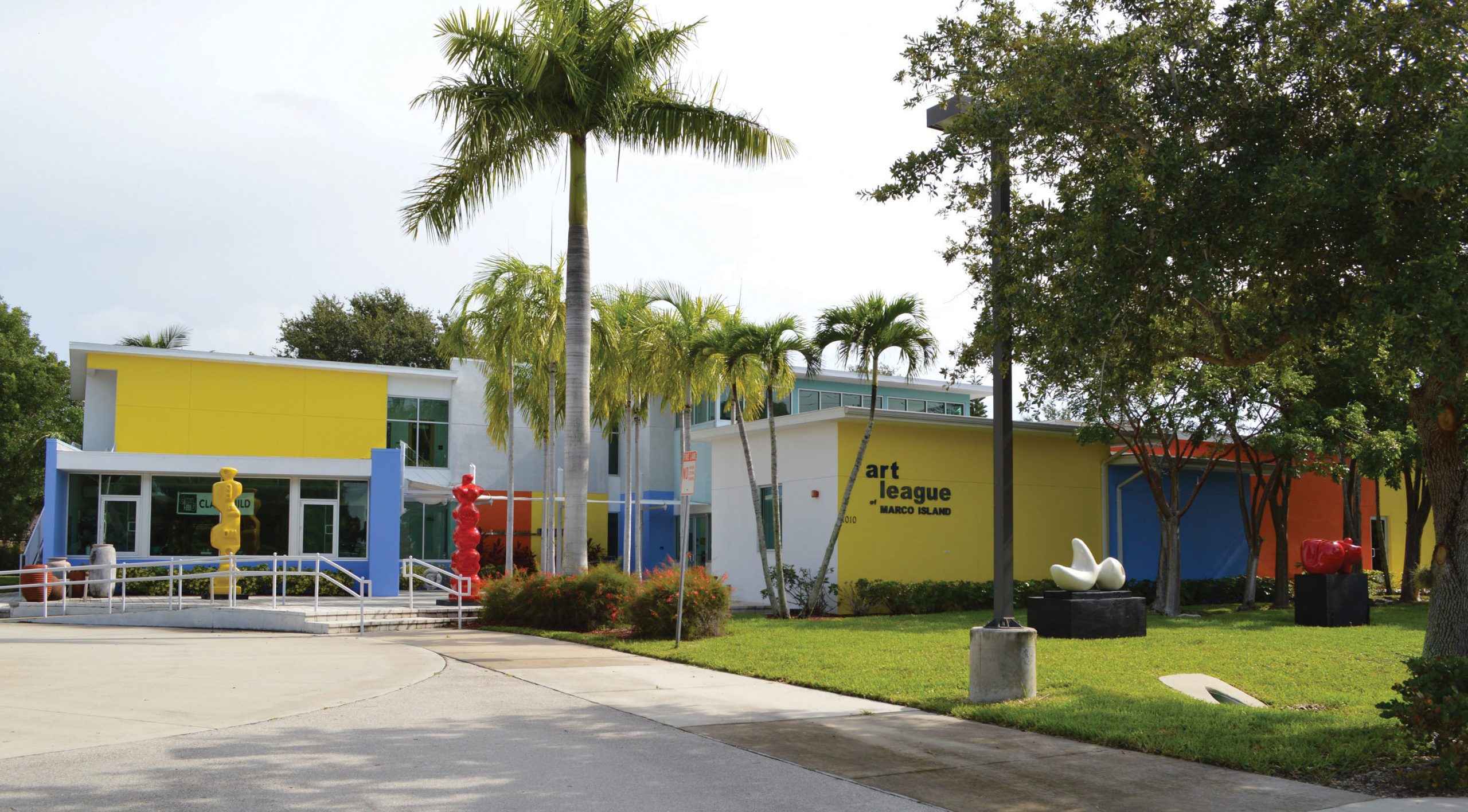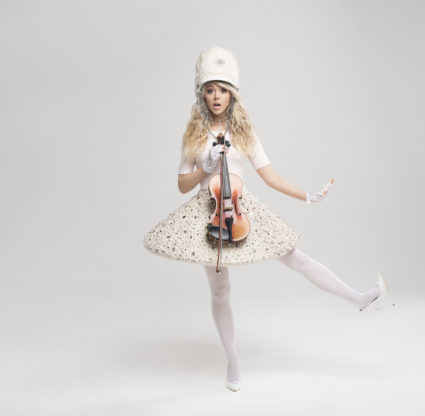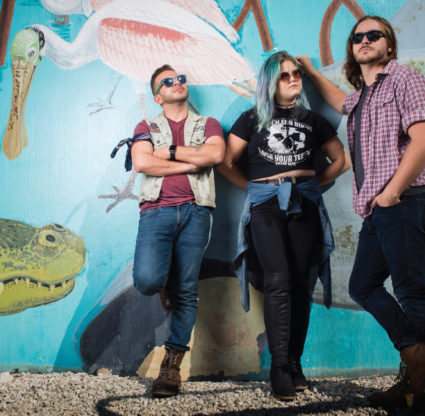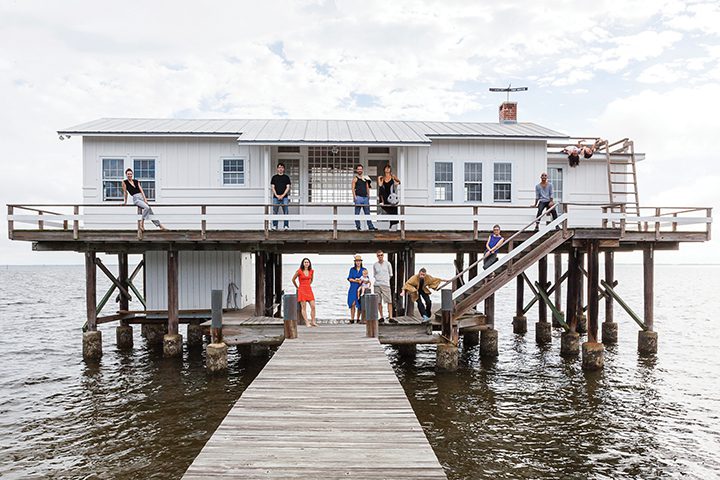If you have an iPhone and you ask Siri how to navigate from the end of Captiva Island to the start of Marco Island, even her electronic tone sounds a little daunted by the trek—“75.1 miles,” she’ll inform you, and because your journey will take you across Lee and Collier counties, according to Siri, you’ll need to block out more than two hours of your day for the schlep.
But it’s not just extreme distance that separates one island paradise from the other. Though the sunsets and sandscapes make both Marco and Sanibel/ Captiva perfect escapes, when it comes to the arts and cultural landscape, it’s one extreme to another. One is established and deeply rooted; the other is still taking shape, but growing fast.
There’s a widespread theory that the northeastern states have the monopoly on culture because when it’s snowing, sleeting or deathly freezing outside, folks warm up inside the theater or in art galleries, or gather in cultural centers for education and discussion. Here along the Gulf coast, with sunshine and warm temperatures nearly all year round, residents and visitors can’t be blamed for getting distracted by the beach, fishing, golfing, tennis, biking and such—and while the symphony makes for a lovely evening, it requires putting on close-toed shoes. Now, take that theory to the extreme of living on an island, far removed from the nearest Costco, or in some spots, even cell towers—well, why not just lie in a hammock all day sipping margaritas?
And yet, there are community leaders and artists, on both Marco Island and Sanibel/Captiva islands who realize the importance of the arts as a foundation to a town—even if that town is a sleepy, breezy island scented by suntan oil and mango trees.
When the legendary New York City-based artist Robert Rauschenberg was looking for a seaside residence for relaxation and inspiration, he chose Captiva. From 1971 until his death just six years ago, he created countless masterpieces—his soundtrack being the cries of seagulls and the whispering of the surf. Perhaps Rauschenberg set the tone, because eclectic, laid-back, colorful Sanibel and Captiva islands aren’t just vacation wonderlands; they’re an artist’s inspiration and haven. Lee Ellen Harder is the executive director of BIG Arts, the go-to cultural center on the island that boasts a performance hall, the 164-seat Herb Strauss Theater, a thriving film society, dance programs and more. Harder has lived on Sanibel for more than 25 years. “When BIG Arts was started in the late ’80s, there were three employees,” she says. “These days we have a full-time staff of 16, which doesn’t include the seasonal company members of actors, musicians and directors. We just keep growing—especially in the past few years.”
The production manager of the Herb Strauss Theater, Bobby Logue, says he’s noticed a new audience of younger people coming to the theater: “We’re bringing in professional actors from New York, directors and designers—so the talent is fantastic; I’ve been with the theater for 10 years and more and more islanders under 55 are finding us.”
With an upcoming season that runs the gamut from sparkly musical revues to edgier new plays like Freud’s Last Session, which imagines a conversation between the psychoanalyst and author C.S. Lewis, the Herb Strauss Theater recognizes the value of entertainment for tourists, along with more serious offerings for residents hungry for art and intellectualism. Island resident, restaurateur (she’s an owner of Il Tesoro Sanibel), artist and mother Jolie Black believes life on Sanibel and Captiva is routed around artists. “There are at least seven galleries, several arts and craft fests throughout the year. We don’t have a mall here; we have shops that sell local work,” Black says. “There isn’t a single traffic light on either island—there’s inspiration all around. It’s a place where you can grab your genius.”
Two hours to the south, the Naples, Marco Island, Everglades Convention & Visitors Bureau plays up Marco Island’s “pristine” beaches, “luxury” resorts and “adventurous” fishing trips. But something’s brewing on Marco Island, and it’s not just the complimentary chamomile tea offered before a $225 massage at one of the resort spas—it’s CAMIG, the Cultural Alliance of Marco Island & Goodland (Goodland, with population of about 300 souls, is a small fishing community in the southeast corner of Marco), which was newly formed in the spring of last year. Leaders of seven area not-for-profits now work under the one umbrella of CAMIG in an effort to be a “unified voice” as island arts and culture groups grow bigger, stronger and better. They include the Goodland Arts Alliance, Island Theater Company, Marco Island Center for the Arts and more. Beverly Dahlstrom is both CAMIG board president and the artistic director of The Marco Players, a 40-year-old community theater. “For many years, the arts organizations on Marco and Goodland were on their own, but we realized we could be stronger for the community if we aligned. There’s power in numbers,” she says. Dahlstrom points out that, despite public impression that the island is made up of only wealthy snowbirds and retirees, there are plenty of young families on the island embracing the arts. “I’m seeing many more younger people showing up at our auditions,” Dahlstrom says. “Yes, it’s an older population here, but it takes young people to work here.”
Hyla Crane, a former theater professional in her early 50s, moved south barely a year ago so she and her husband could be closer to her in-laws. Originally from the northeast, Crane took a job as the executive director of the Marco Island Center for the Arts. She’s passionate about arts and culture on the island—not to mention history and education. “When I first got here, I thought the streets rolled up at 9, but they don’t—there really is so much going on,” Crane says, sounding almost still surprised. “There’s an energy, a growing quality, the arts really are necessary on Marco.” Looking at the season that Crane and her team have put together at the center, there are painting classes, exhibits in two galleries at the center, lectures, book signings, live jazz and folk music. “We have an exhibit of street artists from Miami coming in January, the Marco Island Shakespeare Festival is partnering with the Marco Players for Macbeth in the spring—there’s really so much going on besides shelling,” Crane says.
With people getting out of their hammocks and cheering the importance of the arts, they’ve become robust, vital and necessary, even at the extremes.





